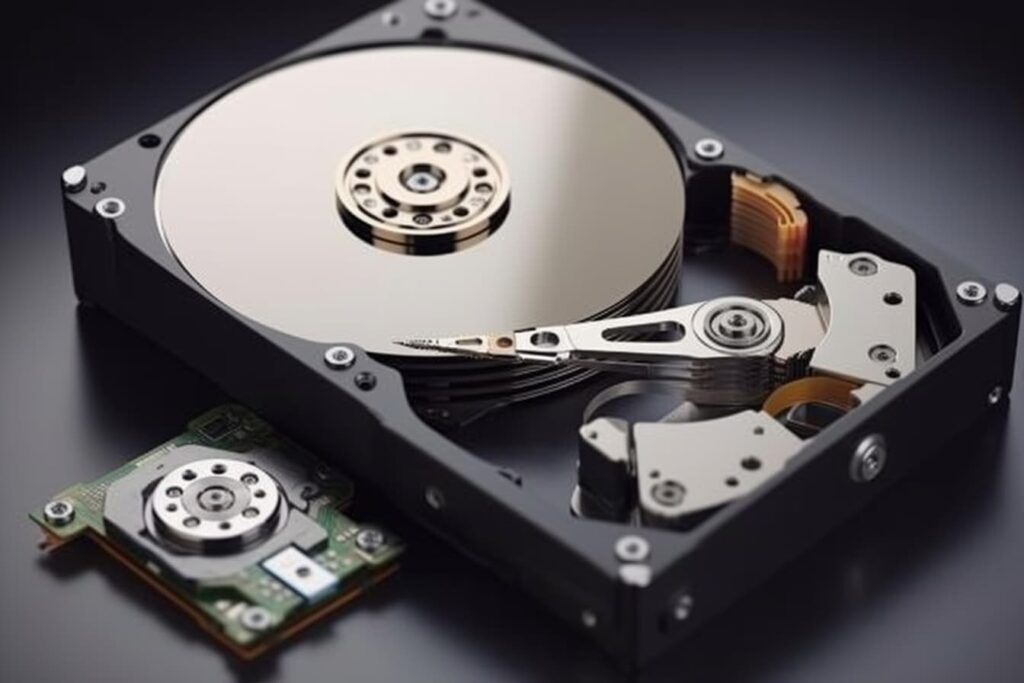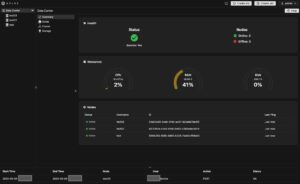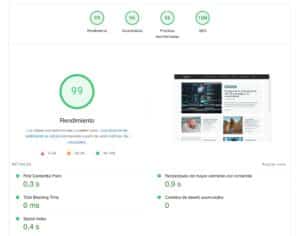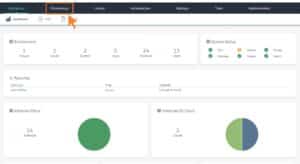Cloning a mechanical hard drive (HDD) to a solid-state drive (SSD) usually promises an instant speed boost. Yet many people discover that, after migrating, the new SSD underperforms—sometimes even feeling slower than the old HDD. What went wrong? In most cases, it isn’t the SSD’s fault but how the clone was made and a few platform settings that need attention.
Below is a clear, actionable explanation of why this happens and how to fix it—no fluff, just practical steps.
Cause #1: Misaligned partitions (4K / 1 MiB alignment)
For years, HDDs used 512-byte logical sectors. SSDs, by contrast, are optimized for 4 KB blocks (and, at the partitioning level, for 1 MiB boundaries). If the cloning tool copies the HDD geometry as-is, your partitions can end up misaligned relative to those 4 KB / 1 MiB boundaries. The result? The SSD has to read/write two physical blocks for each logical request. That doubles operations, adds latency, hurts performance, and accelerates wear.
How to check alignment in Windows
- Open CMD as Administrator and run:
wmic partition get Name, StartingOffsetIf a partition’s StartingOffset is not a multiple of 4,096 (ideally 1,048,576 = 1 MiB), it’s misaligned. - PowerShell alternative:
Get-Partition | Format-Table -AutoSize DiskNumber, PartitionNumber, OffsetVerify Offset is a multiple of 1 MiB.
Note: A clean install of Windows 7 and newer creates aligned partitions automatically. Problems typically appear when you clone an older layout.
How to fix alignment (without reinstalling)
- Use a partition manager with “Align Partition” (e.g., AOMEI Partition Assistant, MiniTool Partition Wizard, EaseUS Partition Master).
- Back up first. Moving partitions is usually safe, but it always carries risk.
- After aligning, reboot and re-check the offset. On many systems, performance improves immediately.
Other common SSD bottlenecks (and what to do)
Misalignment isn’t the only culprit. In upgrades from older machines, you’ll often see additional bottlenecks.
1) SATA mode set to IDE instead of AHCI
- Why it hurts: IDE disables key features (like NCQ), reducing IOPS and increasing latency.
- Fix: Enable AHCI in UEFI/BIOS and ensure Windows is using the AHCI driver (Device Manager should show a “Standard SATA AHCI Controller” or the vendor’s driver). If the OS was installed in IDE mode, switch carefully (enable AHCI in Windows first) to avoid a boot BSOD.
2) TRIM disabled
- Why it hurts: Without TRIM, the SSD can’t efficiently recycle deleted blocks and will slow down over time.
- Check in CMD:
fsutil behavior query DisableDeleteNotifyA 0 means TRIM is enabled. - Enable:
fsutil behavior set DisableDeleteNotify 0
3) Generic or outdated drivers
- Why it hurts: Old or generic chipset/SATA/NVMe drivers can cap performance.
- Fix: Install chipset, SATA/AHCI, and NVMe drivers from the system/motherboard vendor, and update UEFI/BIOS if relevant.
4) SATA 3 Gb/s port or weak cabling
- Why it hurts: Some SSDs are plugged into SATA II (3 Gb/s) ports, which top out around 270–300 MB/s.
- Fix: Use a SATA III (6 Gb/s) port and a good-quality cable.
5) Outdated SSD firmware
- Why it hurts: Can affect garbage collection, sustained performance, or compatibility.
- Fix: Update via the vendor tool (Samsung Magician, Crucial Storage Executive, etc.).
6) Power plan and drive policies
- Why it hurts: Power Saver can throttle performance; laptops can be especially aggressive.
- Fix: Use Balanced or High performance; in drive Policies, enable write caching when appropriate.
7) Free space and over-provisioning
- Why it hurts: SSDs perform worse when nearly full.
- Fix: Keep at least 10–20% free to let the controller manage blocks efficiently.
8) Encryption overhead
- Why it hurts: BitLocker and similar layers add some overhead (usually moderate on modern hardware).
- Fix: If performance is critical, measure with and without encryption—balancing against your security requirements.
9) Thermals and throttling
- Why it hurts: Some SSDs downclock when hot.
- Fix: Check temperatures (SMART), improve airflow, and use heatsinks for M.2 when possible.
10) Windows optimization & maintenance
- Open “Optimize Drives” and confirm the SSD is detected as Solid-state drive with a scheduled optimization (TRIM).
- Don’t force classic defrag; Windows already handles TRIM/“retrim” on SSDs.
A simple recovery plan
- Measure first: run a quick benchmark (sequential and especially 4K Q1T1) to set a baseline.
- Check alignment and fix it with a partition tool.
- Verify AHCI and install proper chipset/SATA/NVMe drivers.
- Confirm TRIM (expect 0) and the Optimize Drives schedule.
- Check the SATA port (6 Gb/s) and cable; update SSD firmware.
- Adjust power plan (Balanced/High performance) and ensure enough free space.
- Re-test and compare to your baseline—latency at 4K should improve, not just sequential speeds.
Signs things are healthy (and not)
- Healthy: offsets multiples of 1 MiB, TRIM enabled (0), AHCI active, and speeds matching the interface (SATA III ≈ 500–550 MB/s sequential; NVMe far higher).
- Not healthy: irregular offsets, TRIM disabled, IDE/legacy controller, early saturation at 4K Q1T1, and sequential speeds stuck around ~270 MB/s despite a SATA III port.
Bottom line
Cloning saves time, but if you inherit an HDD layout or keep legacy settings (IDE, generic drivers, TRIM off), your SSD can’t shine. The winning formula is: 4K/1 MiB alignment, AHCI, TRIM, and correct drivers. With those four pillars in place, most “sluggish SSD” cases turn into an SSD that performs as it should.
FAQs
Will reinstalling Windows always fix it?
In many cases, yes—clean installs align partitions correctly and configure AHCI/drivers properly. That said, you can often align and adjust without reinstalling.
How do I know if my port is SATA II or SATA III?
Check your motherboard/laptop specs (manual or vendor tool). A real-world ceiling of ~270–300 MB/s typically indicates SATA II (3 Gb/s).
Is TRIM the same as defragmentation?
No. TRIM tells the SSD which blocks no longer hold valid data so it can recycle them efficiently. Classic defrag isn’t useful on SSDs and can add unnecessary writes.
Will BitLocker make my SSD slow?
On modern hardware, the impact is usually modest. On older or very low-end hardware, you might notice it in IOPS/latency. Measure both ways if performance is critical—without compromising required security.











